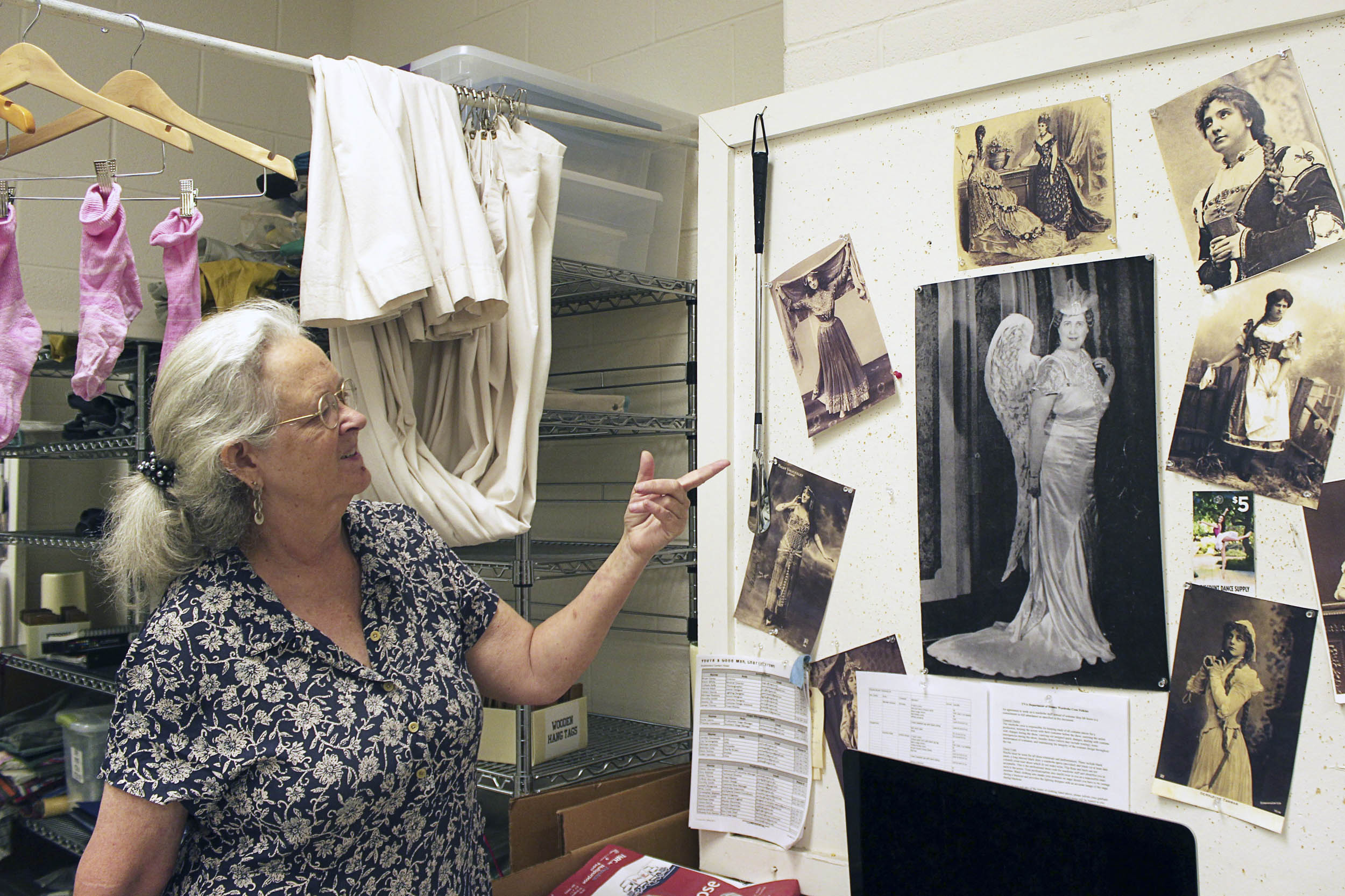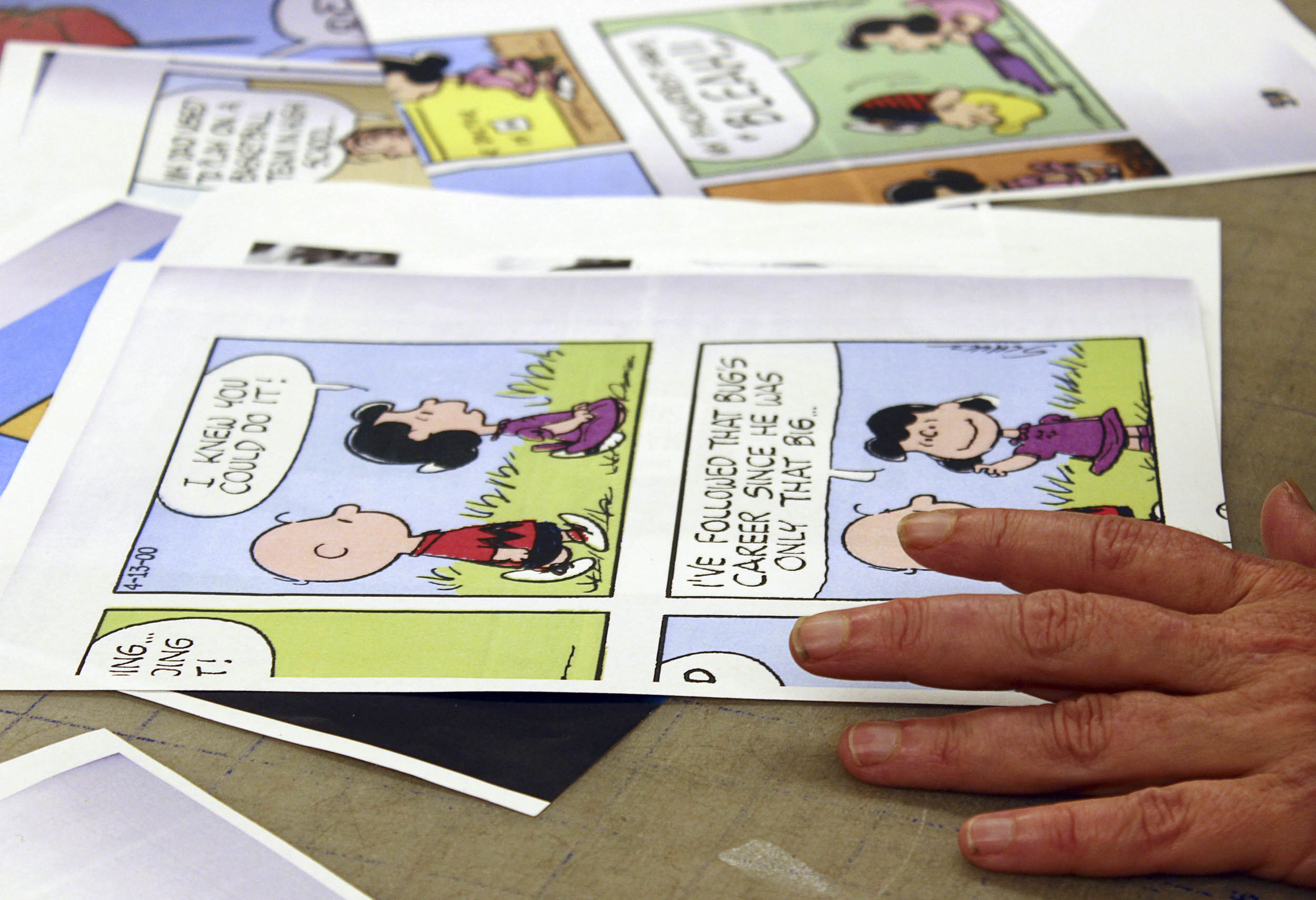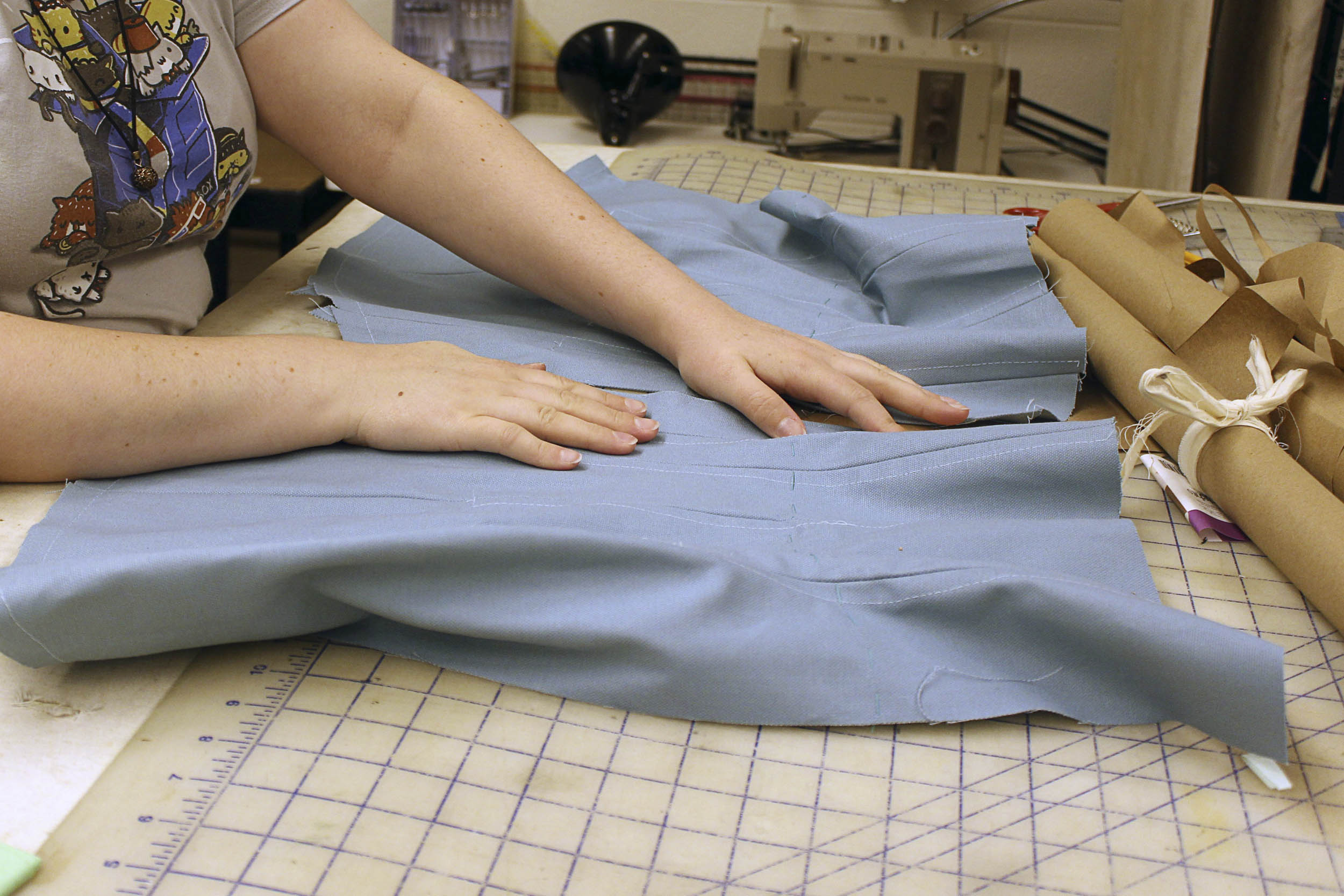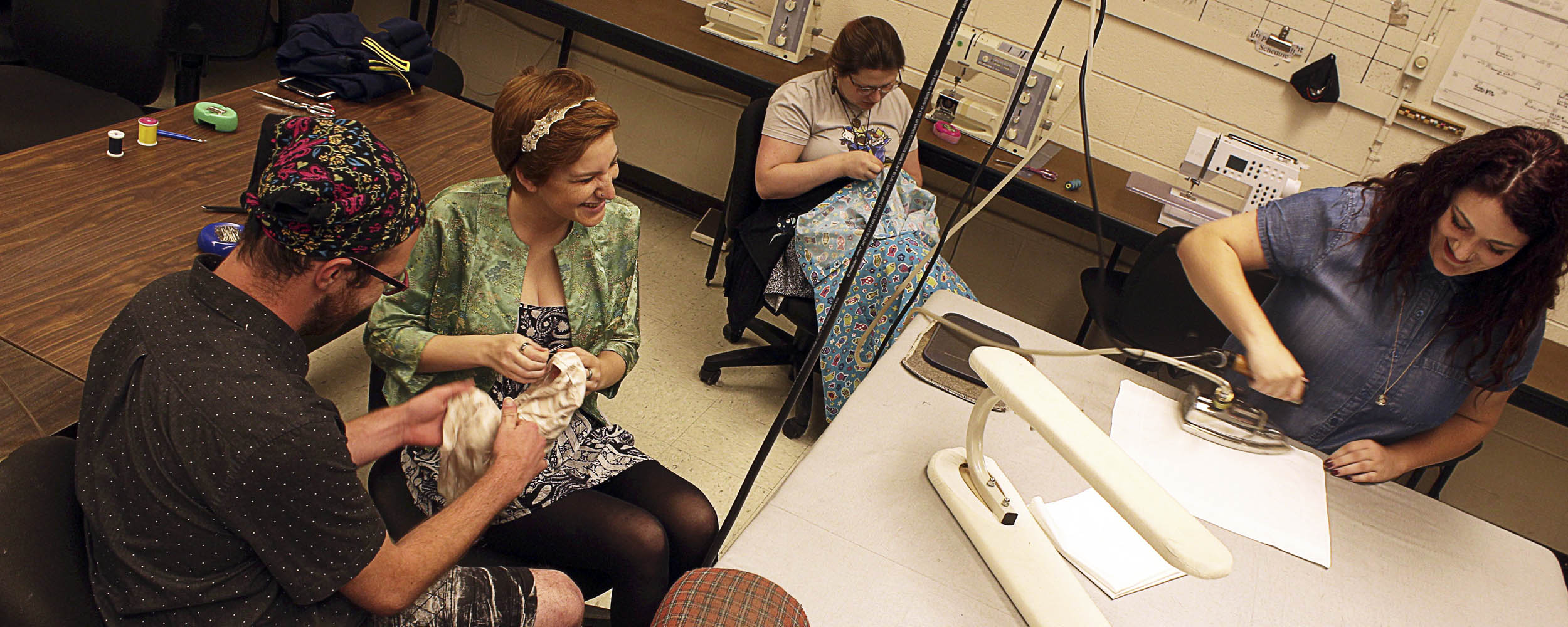As the show-biz saying goes, “The show must go on.” But that would be much easier said than done, if not for a theater’s costume department.
The costume shop of the Heritage Theatre Festival, a professional theater company that the University of Virginia’s Department of Drama has hosted every summer since 1974, has had a busy season. Outfitting actors in four different shows since early June, costumers are involved from the beginning to the end of the theater’s productions, from the design process to quick costume changes between scenes.
“Costume design has been a wonderful, full-body profession, including historic research, literature, collegiality with diverse artists, a technical skill and two glorious traditions that go back to early man: making clothes and theater,” said Dorothy Smith, the resident costume designer who oversees the costume shop.

Dorothy Smith, Heritage Theatre Festival’s costume shop designer and costume director, looks at inspirations for the costumes used in the company’s production of the fantasia, “Souvenir.” (Photos by Hayley Martin)
With a background that includes owning her own mail-order fashion design business and teaching costume design and history of dress at Randolph-Macon’s Women’s College, Smith came to UVA in 1993 for its new M.F.A. program in costume design and technology and became a part of its inaugural class in 1996. She’s in her eighth summer outfitting Heritage’s actors.
The costume-making process, which takes between one and three weeks per show, starts with reading the scripts. Afterward, she creates a “bible” for the show, a binder filled with images of inspiration for costumes.
“I’m not a great drawer, but I do really complete research,” she said.

Smith flips through inspirations for the costumes in “You’re a Good Man, Charlie Brown,” which ran this July.
Almost all of the costume shop’s members are students drawn from colleges across the country, including UVA.
Jessica Utz is a rising third-year student at UVA and the shop’s design assistant. Her responsibilities include taking alteration notes during fittings and organizing them by character, typing up the costumes’ order of appearance to be displayed at actors’ stations in dressing rooms, and tracking costumes that go in and out of dressing rooms.
“One of the side-effects of this job is by the end of the show, I know everyone’s measurements off the top of my head,” she said. “So I might not be close to the person, but I can be like, ‘I know what your waist size is; I know what size pants and shirt you wear!’”
Caitlin Leyden, a graduate student from the University of Illinois, is the shop’s first hand and later in the season became the cutter/draper as well. As a cutter/draper, she makes the patterns for the show by draping muslin on a mannequin to create the silhouette the designer chooses, and as the first hand, cuts the patterns out for mock-ups and final fabric. For example, for the production of “You’re a Good Man, Charlie Brown,” Leyden found patterns that were close to the 1960s-era garments that the designer wanted to make, transferred them to paper, and then made them according to the actor’s measurements.
“It’s a lot like architecture,” she recalls a former teacher telling her about the job. “It’s more math than you think you’d get into.”
After a piece is cut out, the actor has gone through the first fitting and the appropriate changes are made to the pattern, it goes to the shop’s stitchers: Katie Dennis, from Morehead State University in Kentucky, and Cassidy Huscher, from the University of Kansas. As their title suggests, they stitch the piece together to make the final garment.

Cutter/draper and first hand Caitlin Leyden lays out an unfinished corset.
Smith guides the students so that they not only gain valuable experience, but also build their portfolios, making sure each student creates at least one garment from scratch. The shop builds as many pieces as possible, but because of the concentrated amount of work to be done in a limited time, Heritage sometimes rents or buys costumes – which the stitchers still must alter.
Once the garments are finished, they go into the hands of wardrobe supervisor Joseph Musgrove. Musgrove is, in his words, “the face that everyone knows.” He goes between the stage manager, the designer and the shop manager, as well as communicating with – and helping dress – actors.

Wardrobe supervisor Joseph Musgrove adds fake sweat to a costume piece for Heritage’s production of “The Odd Couple.”
With limited time and sometimes delicate materials to work with, Musgrove knows a lot of tricks of the trade. He dilutes vodka with water to create a cleaning solution for garments that can’t be dry-cleaned; he stores costumes behind the set to facilitate speedy changes backstage between scenes.
While Musgrove has many roles and uses different techniques, there is one thing he always keeps consistent. “Organization is the key to every costume shop,” he said. “If it’s not efficient, it’s not safe.”
A costume malfunction can result in injury to an actor, he said. Musgrove recounted a time when a show had to momentarily stop to protect an actress whose hem caused her to get stuck in a piece of the set. “If the audience never notices that the actor has changed costumes until they are already on stage, then I’ve done my job right. It’s supposed to look seamless.”
Media Contact
Article Information
August 4, 2016
/content/outfitted-costume-shop-helps-shows-go-seamlessly

